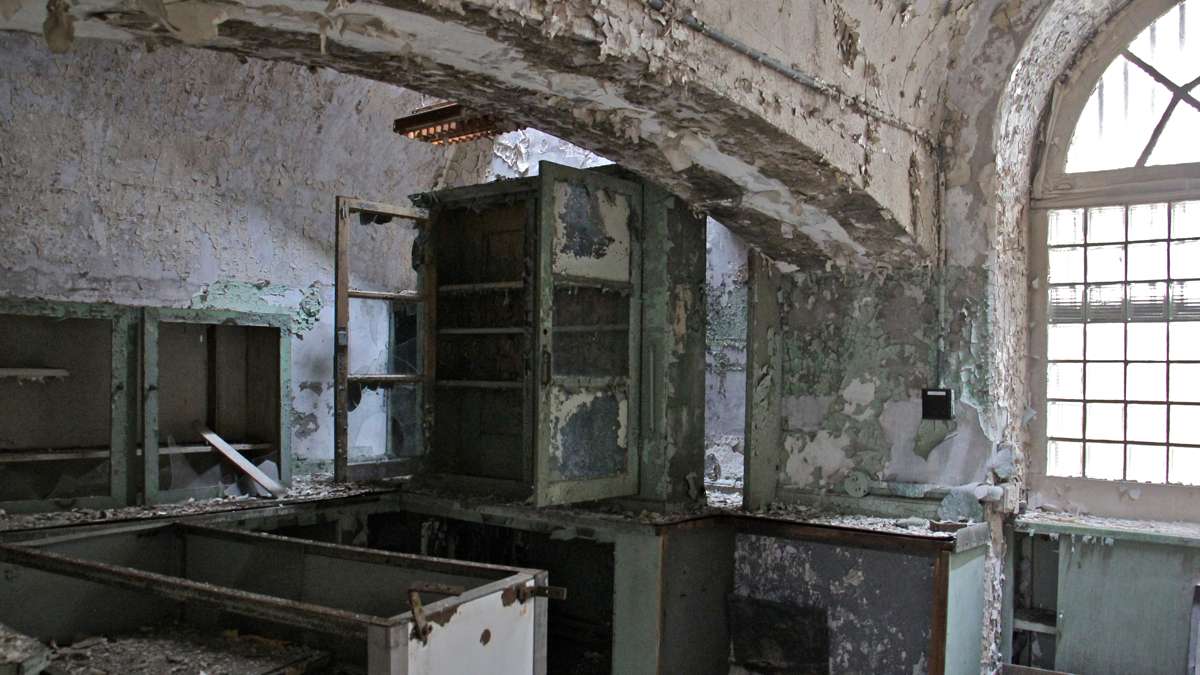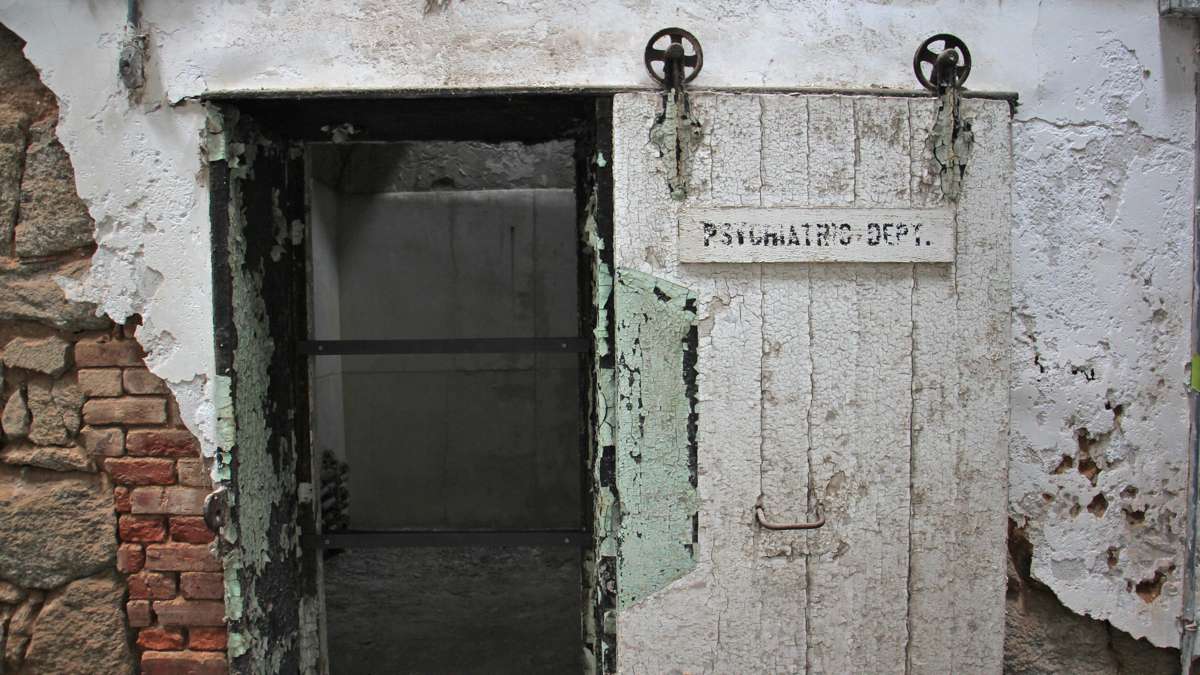For the first time, historic prison offers tours of the hospital [photos]
The caretakers of Philadelphia’s Eastern State Penitentiary keep the 19th-century prison in “suspended decay” — the walls are stabilized, but the rust, grime, and dilapidation from decades of abandonment remain. Plaster is crumbling, rafters have fallen, broken furniture is lying where it collapsed.
As such, visitors are able to peer inside the structure to see how the prison evolved over its 140-year life of incarceration.
Nowhere is that more evident than the hospital block. Tour supervisor Matt Murphy said the operating room — with its overhead light still dangling from rusted tracking — is the most popular room on the grounds.
“The state of decay really captures the imagination,” he said. “People are fascinated with death and dying, with sickness. That, combined with a creepy old prison, is pretty compelling stuff.”
This is where limbs were amputated. The prison used to bring in plastic surgeons to remove scars and tattoos from prisoners about to be released. This is where Al Capone had his tonsils removed.
The operating room has been open for guided tours for several years, while the rest of the hospital block had to be roped off due to dangerous structural damage.
This weekend, the the newly stabilized block will debut to the public.
The hospital block was originally designed as cell block No. 3, one of the original radiating arms emanating from the prison’s central hub — an innovative design in 1830 that enabled guards to more easily monitor the grounds.
Each arm was lined with individual cells in compliance with the prison’s philosophy that isolation and reflection would foster penitence. Prisoners were not allowed to see or speak with other prisoners; all cells had their own, tiny yard separated by high walls.
“It naturally evolves into a hospital,” said Murphy. “There’s one disease you can put the blame on: tuberculosis. Nearly half the deaths in the prison can be attributed to tuberculosis.”
Tuberculosis reached epidemic levels inside the prison, where overcrowding allowed the disease to spread easily. Murphy tells a tragic story of a girl named Mary Ash who was arrested for arson in 1876. At just 11 years old, she was imprisoned in Eastern State for the 4-year sentence. Once inside, Ash soon caught TB and died at age 13.
Some of the cells were converted into solariums, under the idea that sunlight and fresh air would cure tuberculosis. These cells had their doors widened to let in more air, while bars across the doorways kept the inmates inside.
By early- to mid-20th century, the tuberculosis epidemic subsided as doctors learned to get a handle on bacterial infections. Some of these cells were then converted — again — to deal with the other great prison health problem: psychosis. Certain cells were equipped with steel-reinforced doors, for strength and soundproofing, to contain psychotic episodes.
It took a long time for doctors to get a handle on mental health.
“They would describe prisons as lunatics, or idiots, or half-idiots, or morons,” said Murphy. “Today, looking back on the records, we can recognize some people were clearly mentally ill, or maybe had some kind of cognitive disability, maybe on the autism spectrum, maybe just had a low IQ.”
Murphy — who has been poring through historic records to prepare tours through the hospital block — said many 19th-century doctors assumed psychosis was caused by the moral turpitude of masturbating in isolation, apparently never considering that 24/7 isolation might trigger mental degradation on its own.
For all its flaws in hindsight (straitjackets were commonly used), medical treatment at Eastern State Penitentiary was considered the finest of the Pennsylvania prison system. Sick inmates from other prisoners were sent to ESP for treatment. That was due mostly to the greater medical community in Philadelphia.
At any given time there were dozens of doctors from the city’s hospitals available — often pro bono — to administer specialized care. Prisoners often received the best techniques known to medicine at the time — techniques that evolved from the prison’s opening in 1830 to its closing in 1970.
The newly opened hospital block will be part of Eastern State’s regular tours.
WHYY is your source for fact-based, in-depth journalism and information. As a nonprofit organization, we rely on financial support from readers like you. Please give today.















